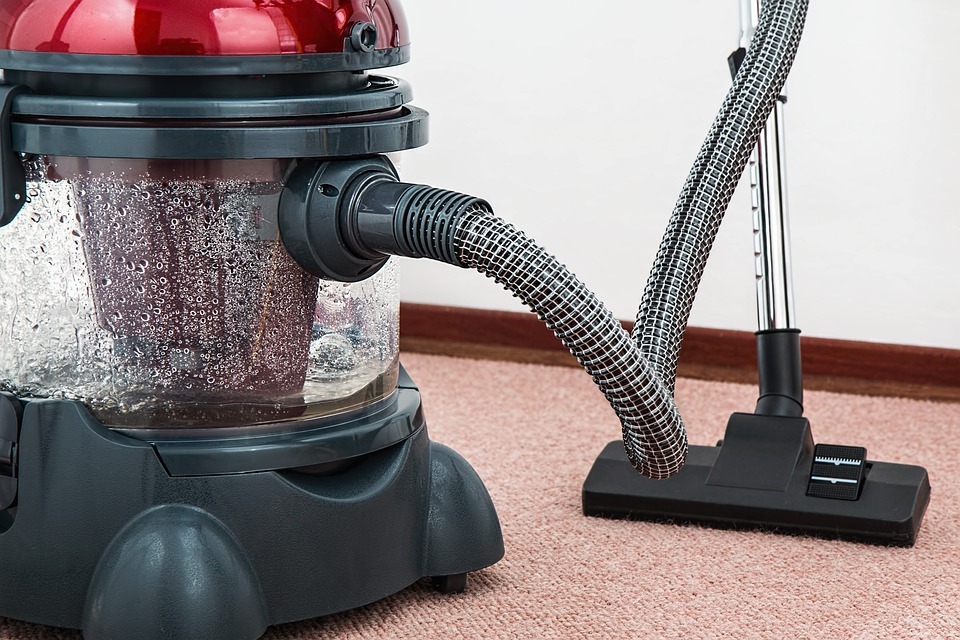The presence of stains on the carpet can be upsetting as well as ugly. The most important thing to remember while dealing with carpet stains is to act quickly. Waiting will make the carpet’s color more deeply ingrained, making it more difficult to remove. Colored carpet stains are cleaned and released the same way as other stains; a stain is a stain, and you must remove it regardless of where it came from.
Nobody enjoys seeing stains on the carpet (or wasting curry). Naturally, you want to know how to get turmeric out of carpet as soon as possible. Curry stains on the carpet can be removed effectively by acting swiftly and aggressively, followed by trial and error until you achieve the expected outcome.
Common Types of Carpet Fabric
Learning the different types of carpet flooring surely makes a big difference when cleaning them. If you don’t know what kind of fabric you are cleaning, the lesser your advantage in keeping your carpet at its best. Here are some common types of carpets in the market.
1. Nylon
Nylon is one of the store’s most popular synthetic fabrics for carpet choices. It is affordable and durable. Mold and mildew have no chance around nylon. So, if you’re looking for the best basement flooring, this is a great fiber. It’s also extremely stained resistant and fade-resistant.
2. Olefin
Olefin is resistant to moisture, mold, and mildew, making it a good carpet for basements and outdoors. It’s harder than nylon but offers less comfort compared to nylon fabrics.
3. Polyester
Polyester is very similar to nylon but slightly cheaper. Like nylon, it resists moisture and stains and is comfortable to wear. In addition, the thick pile of polyester is surprisingly soft. Polyester carpet is great value for money but less durable than nylon; it does not recover from wear and tear as easily as nylon.
4. Cotton
Cotton is very soft, to be more exact, incredibly soft, and most are completely organic. However, it is one of the most expensive types of carpet you can buy. Cotton doesn’t pick up dirt well, but it’s easy to clean. It’s a low-maintenance type of carpet fiber prone to fading, so like most natural carpet types, it’s ideal for rooms where children and pets don’t move around much.
5. Wool
Wool is the best carpet and the only natural fiber that can be used in carpets. It is considered a durable, stain-resistant, and environmentally friendly flooring material. However, the downside is that wool differs from the type of carpet that’s easy to care for. Additionally, you want to avoid putting it in a room with direct natural light, as the colors can fade. It also costs about twice as much as synthetic carpet.
The Quicker, The Better
The likelihood that the curry sauce may seep into your carpet fibers increases the longer you leave that lump of curry sauce there. Therefore, you must quickly remove the curry from the area. Pick up any extra with whatever you have available.
A napkin is quite helpful. Even better is using a paper towel!
It might seem that a moist towel would be ideal. Avoid doing this! The water could spread the stain more widely and dilute the complete hues. Remember, we are currently trying to minimize harm.
Boiling water is not a good idea at this time. Stains may get “set” permanently. And if that occurs, you won’t have many options. You can scrape the extra curry with a knife if there is only a tiny bit on there.
Done Removing the Excess? Next is Dilute
Once all the leftover curries are gone, you’ve done everything possible to limit the damage. It’s time to decrease the harmful effects of that horrible boy and weaken him.
Gently dab the stain with cold water and a clean cloth until it is barely wet. You don’t need to wet the carpet, but remember that some carpets, like sisal, might be destroyed by water.
Try again with a dry cloth or sponge after the area has become damp to see if you can remove any more of the stain.
How to Remove Curry Stains: Follow These Steps!
It should have dried by now, and hopefully, with the sunlight, it won’t appear as horrible.
Try to Brush the Stain
After the curry sauce has dried, give it a firm brush. Any significant pieces that are still present will frequently peel away.
Perhaps your curry hasn’t seeped into the carpet fibers because they make contemporary carpets to be stain-resistant. You might discover that by brushing the stain and “raising the knap,” the surrounding threads mask the color entirely, rendering it invisible.
Curry Stains: Can Baking Soda Remove Them?
You may remove almost every stain with baking soda and water. These are ways how to apply it:
- To form a loose paste, combine a tablespoon of water and baking soda.
- Rub this into the stain carefully using a toothbrush.
- Let it sit for around 30 minutes.
- You should scrub the stain carefully using a clean, moist cloth.
- Rinse and repeat!
Improve it by washing up with liquid
Did you know that dishwashing soap is an effective degreaser? It works wonders at eliminating stains, too. Because the washing-up liquid molecules contain an end that prefers water and a lot that likes oils, it works. As a result, oil flecks (seen in curry) can be washed away.
In addition, soap contains a significant amount of glycerin. As a result, stain-causing chemicals’ molecules become softer and much easier to remove.
Using a Washing Powder
Yes, it is cleaning up stains from carpets. It operates similarly to dishwashing liquid. It is just a tiny bit more robust.
Here is the approach I think is most persuasive:
- Mix a teaspoon of washing powder with around three tablespoons of water to create a thin paste. Utilizing a clean cloth or toothbrush, gently rub the paste into the stain.
- After letting this combination sit for ten minutes, remove the residue with a clean, moist cloth. Watch the effects as they dry.
Use a Product Intended for Carpet Cleaning
Professional carpet cleaners typically find sulfuric acid and hydrogen peroxide in trace levels. It is likely known to you as “bleach.” The bleach is strong enough to partially remove the stain’s chemical components but not nearly sufficient to disintegrate the carpet completely.
Observe the directions printed on the bottle or container. After letting it dry, vacuum your carpet. Where other approaches have fallen short, I’ve discovered this to be one of the most successful ones.
Get A Cheap Disposable Razor
I mean it. We are no longer cutting the sides and back of your carpet short. However, if you are careful, you might find that if the stain has just reached the very top of the fibers, you can effectively clip them off.
Use your razor to massage the affected region gently. It would benefit if you allowed some time for this technique. If it requires some time, you are doing it correctly.
Don’t rip pieces of the carpet out. You should gradually and attentively notice a felt-like substance growing on the razor, demonstrating its success. With your fingers, carefully remove this felt before continuing. You should observe a pretty effective result if the stain hasn’t penetrated too far.
Final Reminder
If, at first, you are unsuccessful. Treat the stain once more. Okay, that moment of negligence sure did create a lot of labor. You can remove not all stains in a single step.
Do the stains look less noticeable after attempting the steps above? If so, it must be effective. The hue isn’t quite as off now. Repeat the same action. The more times you use the stain remover, the more likely it will disappear.
The best method how to get turmeric out of the carpet is to act quickly. It’s time to start working now that the initial phase of surprise and horror has passed. The good news is that you may use various solutions and everyday items to remove curry stains from your carpet.



